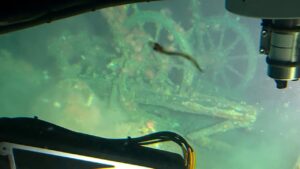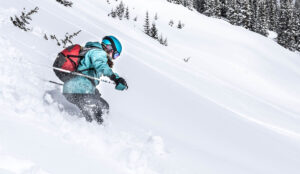The first Antarctic explorers trudged into the white nothingness with primitive gear and little idea what to expect. It’s not surprising, then, that tragedy, heroic failures and extreme suffering distinguish the so-called Golden Age of polar exploration. Robert Scott’s expedition ended bleakly just 18km from a food cache that would have saved their lives. Another member of that expedition, Apsley Cherry-Garrard, who did not join his commander to the South Pole, survived his own harrowing adventure, which he describes in the famous Winter Journey section of his book, The Worst Journey in the World. Some, including Paul Theroux, consider this the best travel book ever written.
These days, Antarctica is typically less a Worst Journey than a dream destination for tourists, outdoor athletes and scientists. Visitors are much better equipped. They no longer need to come by ship and stay over winter. Instead, they fly straight into the interior and can base themselves in camps with washing facilities, restaurants and even volleyball courts.
For modern adventurers desiring a trek, not a taste, Antarctic Logistics & Expeditions (ALE) can drop extra supplies en route, offers daily in-depth weather forecasts and even send a rescue plane if your expedition is in danger of going the way of Scott’s.

Routefinding through snow “mushrooms” on Mount Sidley. Photo: Tre-C Dumais/ALE
Still, the white continent has not lost its ability to shock and awe. First — and there’s no getting around this — Antarctica is cold. Winter temperatures can drop to -90ºC, and even summer is no picnic. December at the South Pole is a comparatively balmy -25º to -30ºC; windchill can make it feel much colder.
Antarctica’s unpredictability surprises even those who have made a career here. “Antarctica can never be taken for granted,” says ALE Managing Partner David Rootes. “The most experienced know to be wary at all times. Antarctica will always catch the complacent.”
The weather begins to complicate logistics even before you arrive. Flights from Punta Arenas are regularly delayed by a day or two. The problem used to be much worse. Before moving their main operational base to Union Glacier, ALE used a spot called Patriot Hills. At this more exposed location, the weather sometimes delayed flights for two weeks.

Union Glacier Camp, with Mount Rossman in the background. Photo: Christopher Michel/ALE
The weather in Antarctica acts as an incredible preservative. Leave no trace is a fairly recent mantra, and occasionally, history re-emerges from the ice, as Australian adventurer Damien Gildea discovered while attempting to climb Mount Tyree in 2008. An earlier 1966-67 American mountaineering expedition to the newly discovered Sentinel range left behind a cache of food and medical equipment. Forty years later, it was finally defrosting, and Gildea, Christian Stangl and Walter Laserer took the opportunity to grab a free lunch. There were Choc Wheaten cookies, originally supplied to the 1966 team by Norman Hardie, a Kiwi climber who was part of the first team to successfully summit Kangchenjunga. Other goodies included Cadbury’s chocolate (still edible) and some chewing gum that Gildea reports was “a bit hard.”

Apparently, this looked appetizing to Gildea and his partners. Photo: Damien Gildea
Antarctica drives the world’s weather, because conditions here influence large-scale ocean circulation — the process whereby warm tropical currents move toward the poles. Conversely, this means that conditions elsewhere, such as a strong El Niño/La Niña year, can impact even the interior of Antarctica.
Likewise, climate change is rapidly warming the upper 1,000m of the Southern Ocean. This, in turn, melts the sea ice girdling the continent. For expeditions, this can mean more fog and snow because of increased moisture in the air. Despite advanced predictive technology, Antarctica’s weather remains as fickle as ever.
Last year, unseasonal warmth disrupted several expeditions. Soft, deep snow slowed the progress of those setting off from Hercules Inlet. This, and poor visibility, swiftly killed the hopes of three separate skiers trying to set speed records to the South Pole. Richard Parks, Jenny Davis and Erik Larsen all eventually abandoned their expeditions. Japanese soloist Masatatsu Abe needed an unscheduled resupply when his trek dragged on far longer than expected.

Sunshine is sweet but can be too much of a good thing in Antarctica. Carry 115-block sunscreen, and make sure it’s cream, so it doesn’t freeze in the tube. And no cheap sunglasses. Photo: Carl Alvey/ALE
Fortunately for tourists, ALE builds wiggle room into all its logistics. Rootes recounted a recent example. It sounded simple enough at first: a tractor broke down in the middle of nowhere because of a faulty fuel injector. In Antarctica, you can’t just call AAA, but that’s why an engineer was driving the vehicle.
Despite his expertise, the tractor still wouldn’t start. Apparently, its software system needed a full reset to get going again. That meant calling the manufacturer in the U.S. and flying someone out. Only one engineer in the company had an active passport, and he soon found himself on a flight to Antarctica.
In another example of polar unpredictability, then-fledgling ALE guide Alice Wang thought she’d be fairly well-equipped for her first trip into the interior. She’d worked on cruise ships in the Southern Ocean and was familiar with the Antarctic Peninsula. “On the Peninsula, I knew what I was getting myself into,” she recalls. “But the amount of UV in the interior is so much more extreme. Even inside my tent, I had to put on sunscreen before going to bed.”
Then her vision deteriorated. Her sunglasses, perfectly suitable elsewhere, did not block out enough UV on this ozone-thin, dazzlingly bright inferno. She became snowblind.
Hours in total darkness brought her sight back, but she had to wear a pair of goggles for the rest of her trip. Now experienced, Wang checks her clients’ kits thoroughly before leaving Punta Arenas. Apart from scrutinizing sunglasses, she still finds herself weeding out items of cotton clothing. As experienced outdoor people know, cotton absorbs sweat and is the least suitable material for a cold environment.
Wang also recommends that her female clients bring a pee funnel. Camps provide toilets, but trekking 25m to them during the night, or in a gale, is a pain. Therefore, most guys elect to use a pee bottle. For women, the funnel device allows staying in the comfort of the tent. Prudently, Wang suggests testing the funnel at home in the shower first.

The Vinson Base Camp biffy. Very pleasant in calm air and sunshine, less so in a gale. Photo: John Beatty/ALE
Antarctica isn’t only a physical challenge. The isolation and other-worldliness can be mind-bending, especially for soloists. It’s easier nowadays, with podcasts and music and satphones, but some historic expeditions suffered extreme mental distress. Members of the Australasian Antarctic Expedition of 1911-1914, led by Douglas Mawson, were troubled by strange dreams and even by the behaviour of their huskies. Once, far inland, a lone petrel flew headlong into one of the tents, further shattering the men’s fragile peace of mind, because they could not figure out where the bird had come from.
More recently, Damien Gildea found that ghost critics were unfavourably judging his descent on Mount Epperly. Together with Camilo Rada, he had just climbed the 4,359m mountain via a new route. During the continuous 30-hour marathon, Gildea began to hallucinate. First, legendary climber Conrad Anker appeared in a bright yellow one-piece that Gildea has seen him wearing recently. With Anker were three corporate types in business suits, who sat at an imaginary desk on the mountain while Anker crouched mutely in the snow. The corporate committee muttered to each other under their breaths; Gildea was sure that they were discussing his admittedly sloppy downclimbing technique.

Conrad Anker (right) rocking the spectacular yellow onesie that Gildea “saw” him wearing on Mount Epperly. Photo: Damien Gildea
Gildea is a treasure of slightly barmy Antarctic stories. In 2001, he visited the Vernadsky Research Base. Originally British, it had been sold to Ukraine for a symbolic one pound in 1996. Now, it features homemade vodka, a pool table and a pseudo-famous “bra bar”. Gildea included photos to show that he wasn’t hallucinating this time.

Gildea wasn’t sure who left this particular one behind. Photo: Damien Gildea
Because of the isolation, the weather, the general unpredictability, anyone who visits Antarctica needs to shift mentally from their back-home state. Here, a simple lack of patience can be dangerous. “[This is the] first challenge for everyone going to the Antarctic for the first time,” says Wang.
Adds Ravid Rootes: “Plan A will nearly always fall over, and it is necessary always to have Plan B, and probably C and D.” This need for good-natured patience can begin as early as Punta Arenas if the flight is delayed.
Of course, mental challenges don’t have to be negative. For Wang, Antarctica helps bring about a feeling of “presentness,” where you are totally focused on where you are and what you are doing. Here, she achieves the sort of calm people seek through meditation or mindfulness exercises.
This mental state has heightened some of her favourite moments at the bottom of the world. “I’ve been wakened up by an Emperor Penguin right by my tent,” she recalls. “They’re absolutely fearless. I’ve also heard a whale breach before I’ve seen it, and as we went by each other, I smelt it too. It was pretty fishy! These experiences can’t be captured in a photograph or a video.”

The solitude doesn’t have to be a negative. Photo: Dylan Taylor/ALE
The surprising abundance of wildlife is one of the continent’s biggest draws. On the edge of the southern Weddell Sea, the simple ALE camp at Gould Bay hosts visitors interested in meeting Antarctica’s most sharply dressed inhabitants. Up to 8,000 pairs of Emperor Penguins raise chicks nearby. It was the eggs of this largest species of penguin that Cherry-Garrard collected (elsewhere) during his Worst Journey.
The camp hosts around 15 guests at a time. It is located a respectful distance from the colony and shielded from their view. However, this doesn’t deter the more curious birds from investigating the brightly clad strangers just over the rise. No matter what the experience, Antarctica always surprises.







